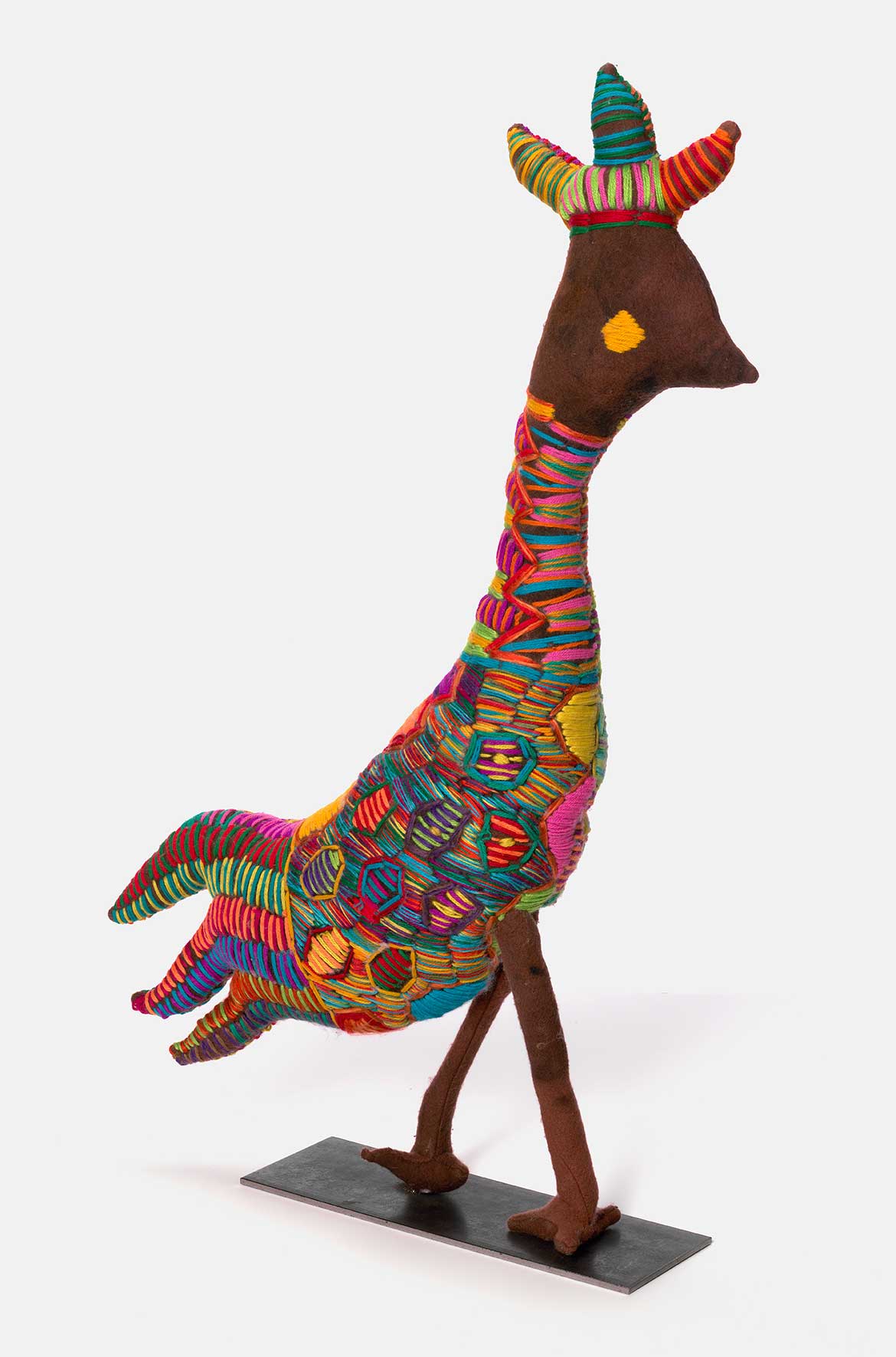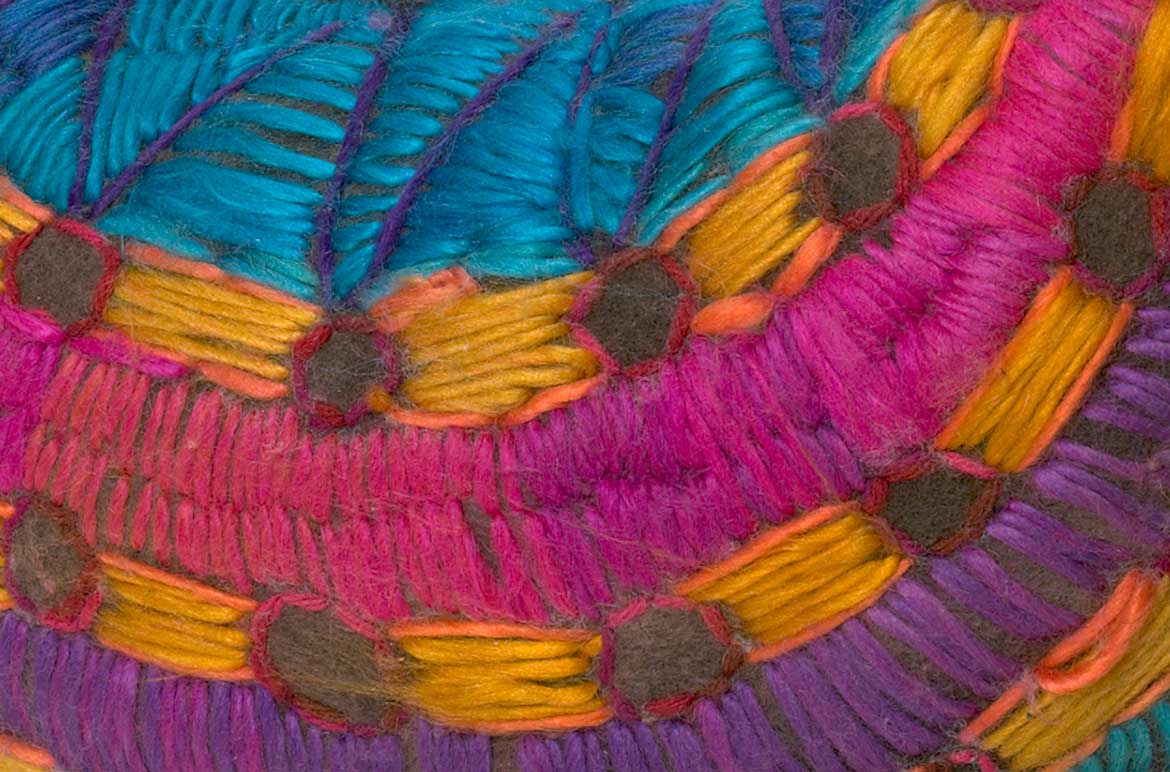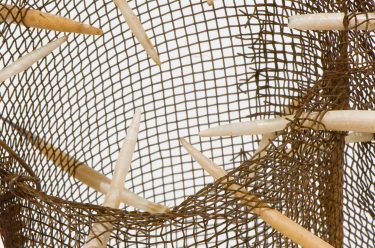These colourful and whimsical soft sculptures were created by women from the Yarrenyty Arltere Artists, an Indigenous art enterprise near Alice Springs. We delve into the origins of these remarkable creatures, as well as the positive impact that making art has had on the local community.
Yarrenyty Arltere Artists, an Indigenous art enterprise in Yarrenyty Arltere, the Larapinta Valley Town Camp, west of Alice Springs, are recognised for their vibrant embroidered soft sculptures depicting many facets of life in the desert — from wildlife and customs such as hunting and collecting, to social issues, family life, childcare and intergenerational learning. The not-for-profit art centre was established in 2000, initially as a training program to address chronic social issues faced by families in the town. The centre became an enterprise in 2008 and is now a dynamic hub that plays a vital role in the community as a vehicle for social inclusiveness and economic access.1
Artists in the group work across a variety of media, including jewellery, ceramics, textiles, etching, printmaking, animation and film. They are best known, however, for their soft-form sculptures, prints and textiles using recycled materials, natural dyes, stitching, quilting and cyanotype prints.2 Mottled woollen blankets, sourced from second-hand stores, are the base material for these soft sculptures. After the blankets have been hand-dyed using colours derived from local plants, tea and corroded metals, the artists create the sculptural forms and embellish them with intricate and colourful patterns.3 Using rich, vibrant colours is an act of self-care for the artists. The joy and happiness they bring provides a reprieve from the harsh reality of daily life. A broad array of health issues and substance dependence are familiar concerns within the community, the effects of which are compounded by the difficulty of accessing services in remote areas.
RELATED: Read more about Australian Indigenous Art
SIGN UP NOW: Subscribe to QAGOMA Blog for the latest announcements, recent acquisitions, behind-the-scenes features, and artist stories.

Rhonda Sharpe is a Luritja woman who began working at Yarrenyty Arltere Artists after following an aunty to the art room and discovering a passion for making soft sculptures and printmaking. She says sewing makes her feel happy and proud, and her works often reflect her own inner strength:
When I make two heads on the birds . . . I think that’s like my head telling me different things. . . I have to choose, every day I have to think which way to go. I’m getting stronger to stay at work, to listen to my good head.4
Sharpe’s Woman with bush tucker and goannas 2018 captures a victorious moment of a woman carrying the rewards of her hunting trip: two goannas, bush bananas and ngulpa (bush tobacco). Crafted with care and knowledge of the anatomy of the flora and fauna, the sculpture highlights patterns and textures stitched into the skin of the goannas, giving them a leathery, rough appearance. Sharpe has paid special attention to the way leaves naturally fall, as well as to the woman’s billowy, richly patterned skirt. Her stance, holding her family’s next meal above her head, is a powerful statement of the enduring success of the Yarrenyty Arltere women.


Dulcie Sharpe’s Water bird (rainbow) 2018 and Water bird (orange) 2018, each standing at almost one metre tall, have an absurd, almost comical presence. Their exaggerated forms, wispy feathers and piercing, highly textured colours are humorous and whimsical. The artist’s inspiration for these sculptures comes from birds in and around local waterways. Although similar in form — with their elongated necks, short plump bodies, slender heads and beaks, and carefully fashioned crests — each bird has been created with their own personality and individual markings. It is easy to see that birds are her favourite creatures, with porcupines, as she calls them, coming in a close second.5

Perhaps the most playful of the group is Roxanne Petrick’s Rainbow chicken 2018. The antics of farmyard chickens have long been popularised in children’s entertainment — from Foghorn Leghorn, who starred in Looney Tunes cartoons from 1946 to 1964, to the award-winning stop-motion animation Chicken Run 2000 and Walt Disney’s Chicken Little 2005. The artist describes the work with a level of anthropomorphism also present in these shows; Rainbow chicken, in all its ornate, richly decorated glory, is ‘that rooster walking around showing off all his pretty colours to the ladies’.6
The works of the Yarrenyty Arltere Artists are often humorous, and sometimes ridiculous, but powerful because they are made with a spirit of perseverance and determination, creating a unique visual tradition for the community to share their culture with others.7 In their words, ‘we don’t just make art, we make changes!’8
Katina Davidson is Assistant Curator, Indigenous Australian Art, QAGOMA
Endnotes
1 Yarrenyty Arltere Artists, <http://www.yarrenytyarltereartists.com/about/>, viewed October 2018.
2 Biennale of Sydney, <https://www.biennaleofsydney.art/artists/yarrenyty-arltere-artists/>, viewed October 2018.
3 Clotilde Bullen, ‘Dulcie Sharpe’, in Clotilde Bullen, Hetti Perkins and John Barrett-Lennard, Western Australian Indigenous Art Awards 2013 [exhibition catalogue], Art Gallery of Western Australia, Perth, 2013, pp.38–9.
4 Rhonda Sharpe [artist bio], < http://www.yarrenytyarltereartists.com/artists/#/rhonda-sharpe/>, viewed November 2018.
5 Yarrenyty Arltere Artists, <http://www.yarrenytyarltereartists.com/artists/#/new-gallery-1/>, viewed October 2018.
6 Artist statement, QAGOMA Collection documentation.
7 Sophie Wallace, ‘We are the legends: Yarrenyty Arltere Artists’, in Glenn Barkley, String Theory: Focus on Contemporary Australian Art [exhibition catalogue], Museum of Contemporary Art Australia, Sydney, 2013, pp.102–7.
8 ‘Yarrenyty Arltere Artists’, in Karin Riederer (ed.), Desert Mob 2018 [exhibition catalogue], Araluen Art Centre, Mparntwe (Alice Springs), 2018, p.81.
Read more about the Australian Collection / Subscribe to QAGOMA YouTube to go behind-the-scenes / Watch video on Indigenous Australian Art
Acknowledgment of Country
The Queensland Art Gallery | Gallery of Modern Art (QAGOMA) acknowledges the traditional custodians of the land upon which the Gallery stands in Brisbane. We pay respect to Aboriginal and Torres Strait Islander elders past and present and, in the spirit of reconciliation, acknowledge the immense creative contribution Indigenous people make to the art and culture of this country. It is customary in many Indigenous communities not to mention the name or reproduce photographs of the deceased. All such mentions and photographs are with permission, however, care and discretion should be exercised.
#QAGOMA


